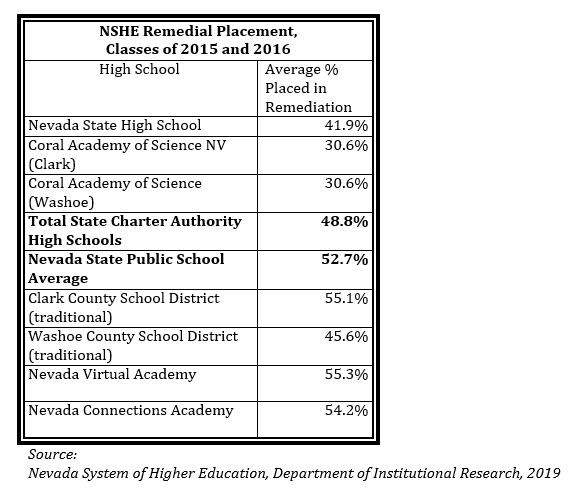Posted at 15:25h
in
Blog
by Don Soifer
May 21, 2019
Don Soifer, Nevada Action for School Options
Testimony in Neutral to SB543
Before the Senate Finance and Assembly Ways and Means Committees
May 21, 2019
Chair Woodhouse, Chair Carlton and Committee Members, I am Don Soifer from Nevada Action for School Options and I appreciate this opportunity to provide testimony about SB543.
We are deeply appreciative for the commitment to supporting equity for all students from which this proposal has emanated. Our recommendations here are offered with the goal of making the most of this historic chance to advance equity of educational opportunities.
The current draft of SB543 proposes to provide additional weighted funding (Section 3) to each student who is: an English Learner, an at-risk pupil, a student with a disability or a gifted and talented pupil. Section 16 defines an “at-risk pupil” as “a pupil who is eligible for free or reduced-price lunches pursuant to 42 USC, or an alternative measure prescribed by the SBOE.”
Nevada can now at this crucial juncture benefit from the lessons of other states that have reformed their school funding formulas to support their educational needs. Our first recommendation is that the Nevada Department of Education undertake a serious review initiative, and that the Legislature should use the interim period as a study period to consider our best options for serving our specific educational needs.
The present legislative draft selects an understandable starting point for defining “at-risk” students, given that 50 percent of Nevada eighth graders who are eligible for the federal program demonstrated math skills at “Below Basic” levels in 2017 on the National Assessment of Educational Progress, while only 21 percent of students from higher-income homes did so. It should be treated as just this, a starting point.
Its implications mean that a student eligible for reduced-price lunches under the federal guidelines, which can be indicate household income of up to 185% of federal poverty levels, is funded at the same level as students with risk factors including homelessness, in foster care, being over-aged and under-accredited in high school, or the other risk factors including those listed below, regardless of how many different are present with a particular student.
For schools striving to be more proactive addressing the needs of their at-risk students, early identification of risk factors matched with supports to mitigate risk, access to targeted resources is vital to their success.
Researchers now understand more about the ways a child’s brain responds to trauma and toxic stress in their lives, both in terms of cognition and expression, often leading to executive functioning impairments that also impair classroom learning. Effectively-targeted resources can support schools for such strategies.
As Nevada educators work hard to become the fastest-improving state in the nation for elementary and secondary education, to meet the goals of our state plan under the federal Every Student Succeeds Act, growth in grade-level proficiency is central to this progress. We must not, however, do this at the cost of ignoring the urgent needs of students grappling to rise above the below-basic level of math and reading skills, whose impact on Nevada’s economy will be every bit as profound.
For the 7 percent of Nevada children living in extreme poverty (50 percent of the federal poverty line), or the 2,000+ unaccompanied homeless children and youth, nine out of ten of these considered unsheltered, these decisions will especially matter. (Children’s Advocacy Alliance, 2018 Nevada Children’s Report Card)
Also for, as the Clark County Education Association noted in its 2019 Critical Issues report, schools primarily serving students of color and those living in poverty that suffer from teacher vacancies at a higher rate than other schools.
Understanding these aspects of our students’ lives makes these factors from other states’ at-risk funding designations especially pertinent:
- Below federal poverty guideline (Oregon, NC)
- National School Lunch Program – free only, (Kentucky, Colorado)
- National School Lunch Program – full weight for free, half weight for reduced (MN)
- Homeless, foster youth, an over-age high school student, Temporary Assistance for Needy Families eligible, Supplemental Nutrition Assistance Program eligible (Illinois, Washington DC)
- Unsatisfactory academic performance measured by standardized test performance (Utah, Arizona, Alabama, Florida, Georgia, South Carolina)
- Two of the following: National School Lunch Program, habitual truancy, homeless, migrant, English language learners, recent immigrant (three years), over-age high school student (Michigan)[1]
The Denver Public Schools, for instance, enacted a system to budget approximately $500 for students who qualify for free or reduced-price lunch, and then additional targeted financial resources to students who are homeless, in the foster care system, and whose families receive food stamps.
Funding for at-risk students in the District of Columbia provides schools with additional resources targeted to support students who have experienced homelessness, the foster care system, high school students who are over-aged and under-accredited, and those eligible for the Temporary Assistance for Needy Families and Supplemental Nutrition Assistance Programs.
It will also be crucial that our public charter schools be no less resourced to support the students who need them most – for which they will be held accountable.
Our second recommendation observes that this bill’s current draft lacks any direct stipulation that weighted funding for charter school students be equal to that of their peers in other public schools. Although the authors’ intentions to establish this parity seems clear to us in this room, there will likely be value down the road in requiring this explicitly in statute, and in getting this intention onto the legislative record.
Thank you.
[1] Emily Parker and Michael Griffith, The Importance of At-Risk Funding, Education Commission of the States, June 2016, p. 4.




